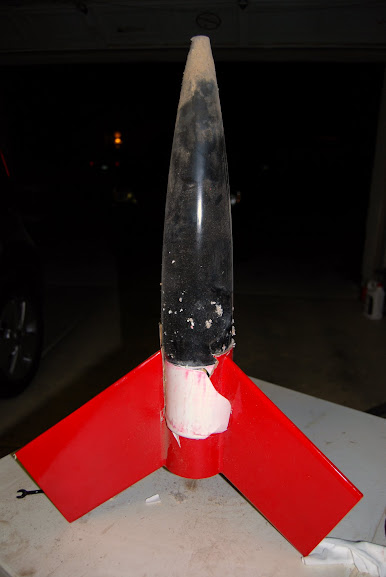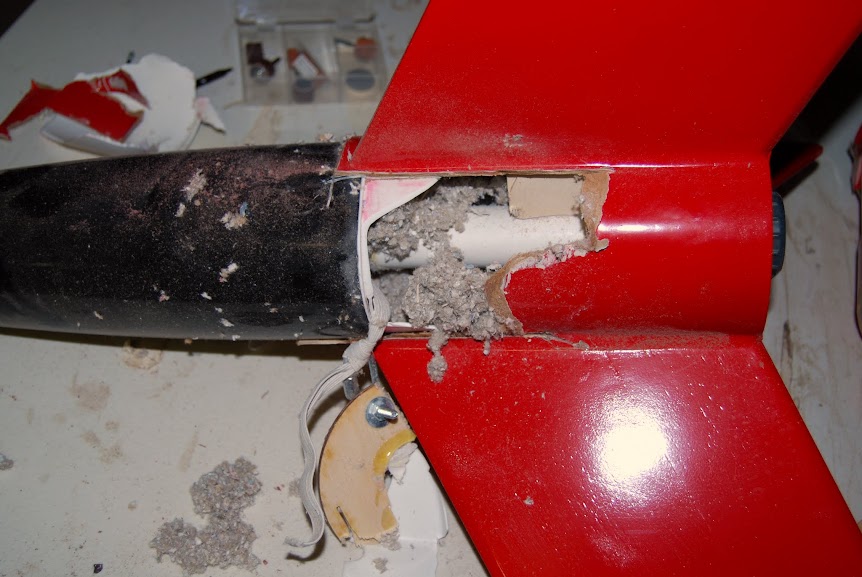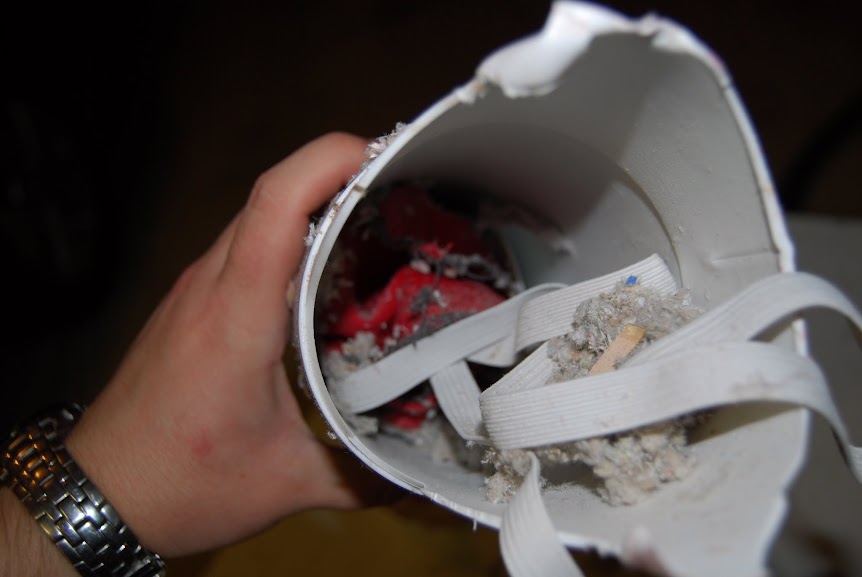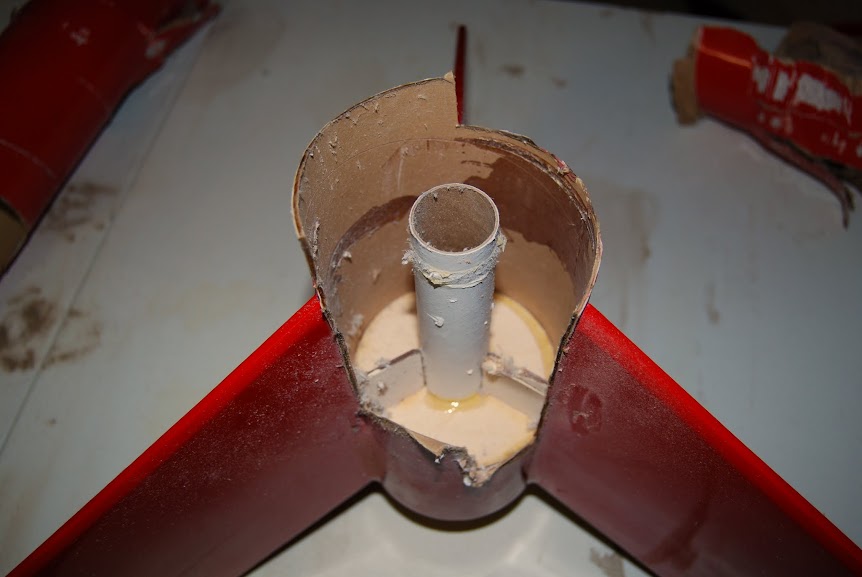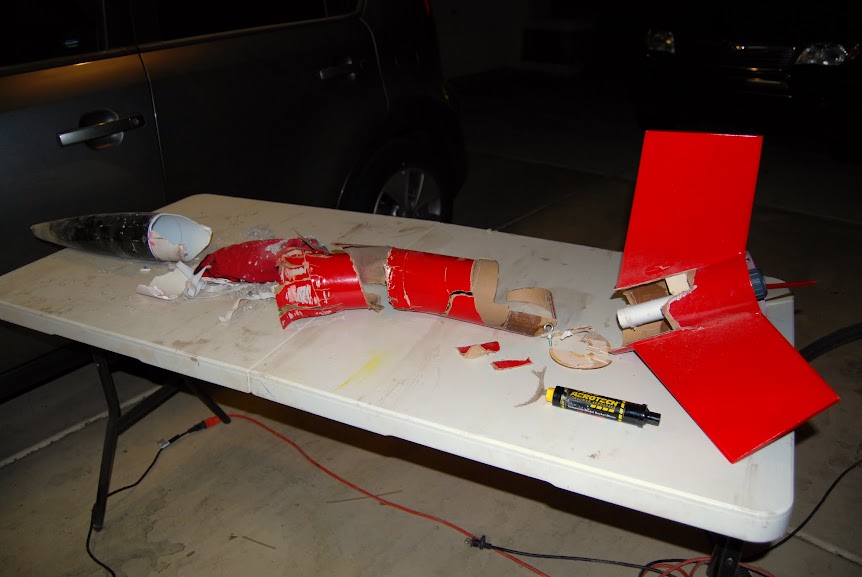Oberon
Well-Known Member
- Joined
- Apr 12, 2015
- Messages
- 343
- Reaction score
- 17
So this is what happens when grease meets delay grain:
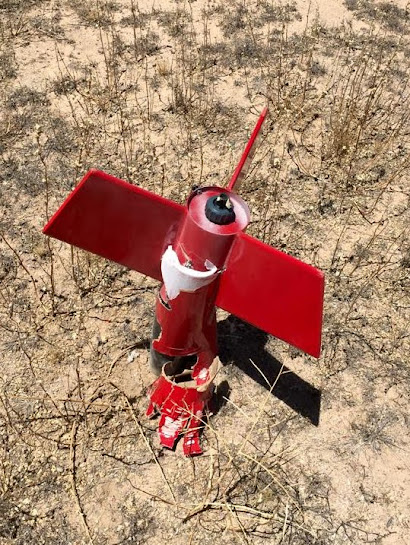
I augured in this MDRM on its maiden voyage on an Aerotech G77 Redline LMS. Boost was nice, straight, and fast. So was the recovery.
I've since built another, and successfully flown it on an L1 cert flight, so I figure I can move on to the next stage of grief - fascinated dissection. It's been an interesting piece of desk art for a few weeks, but I got curious and wanted to see the guts, and maybe find out if anything could be salvaged.
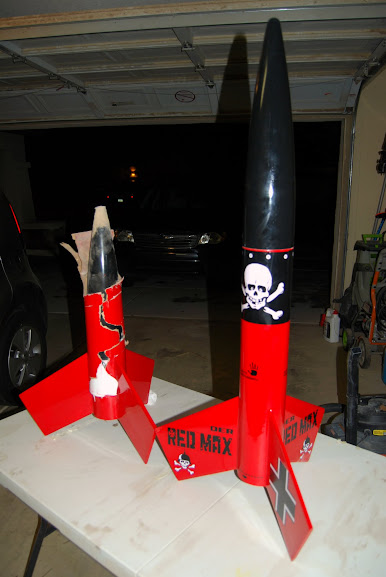
It turns out that 900 ft. nose dives take off a bit of length. The white bit poking out like a broken bone is the bottom of the nose cone.
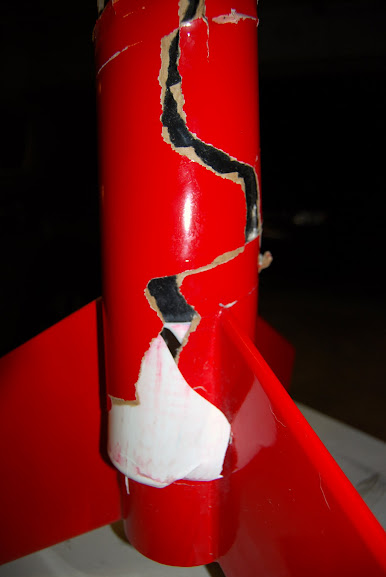
A close up.
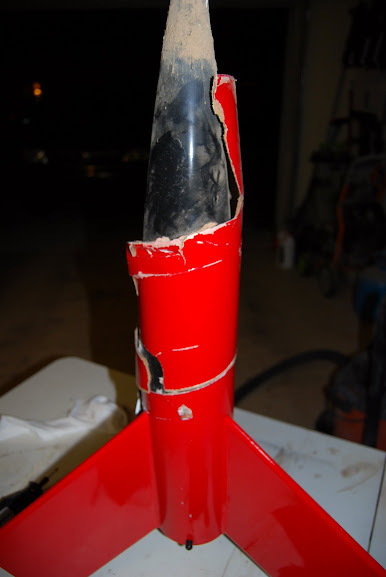
The other side. Note a few inches of fresh Arizona dirt, as well as the divot where the upper rail button got sheared off by the cone shoulder (I never did find it).
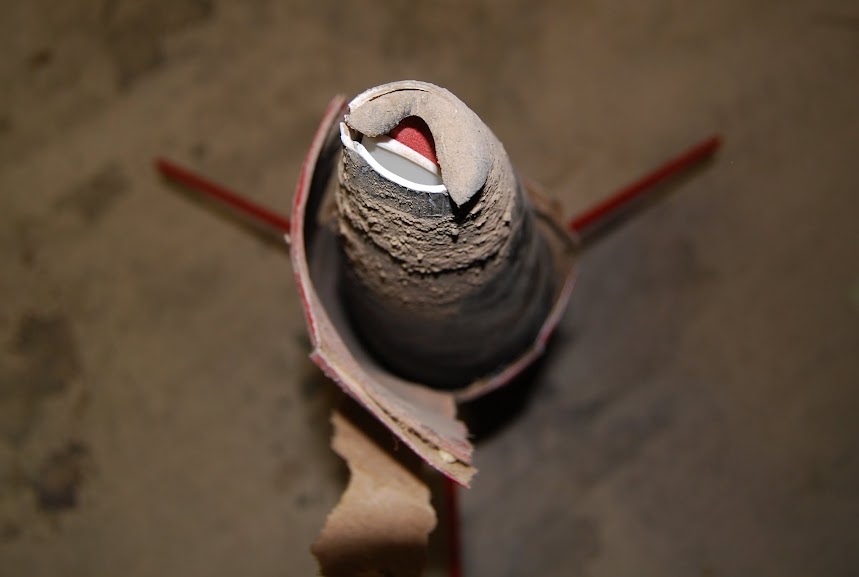
View from the top. The white hunk of plastic in the hole in the cone tip is actually a chunk of the nose cone base. The red is the chute protector, all of the laundry having been shoved up into the tip of the cone.
The crash left the nose pretty well welded into the fin can area, so I needed to trim away the shredded body tube to extract it. The fin can looks pretty intact - no damage to the fins and two of the centering rings are still in place. Perhaps it can be the base of a resurrected rocket?

I augured in this MDRM on its maiden voyage on an Aerotech G77 Redline LMS. Boost was nice, straight, and fast. So was the recovery.
I've since built another, and successfully flown it on an L1 cert flight, so I figure I can move on to the next stage of grief - fascinated dissection. It's been an interesting piece of desk art for a few weeks, but I got curious and wanted to see the guts, and maybe find out if anything could be salvaged.

It turns out that 900 ft. nose dives take off a bit of length. The white bit poking out like a broken bone is the bottom of the nose cone.

A close up.

The other side. Note a few inches of fresh Arizona dirt, as well as the divot where the upper rail button got sheared off by the cone shoulder (I never did find it).

View from the top. The white hunk of plastic in the hole in the cone tip is actually a chunk of the nose cone base. The red is the chute protector, all of the laundry having been shoved up into the tip of the cone.
The crash left the nose pretty well welded into the fin can area, so I needed to trim away the shredded body tube to extract it. The fin can looks pretty intact - no damage to the fins and two of the centering rings are still in place. Perhaps it can be the base of a resurrected rocket?





